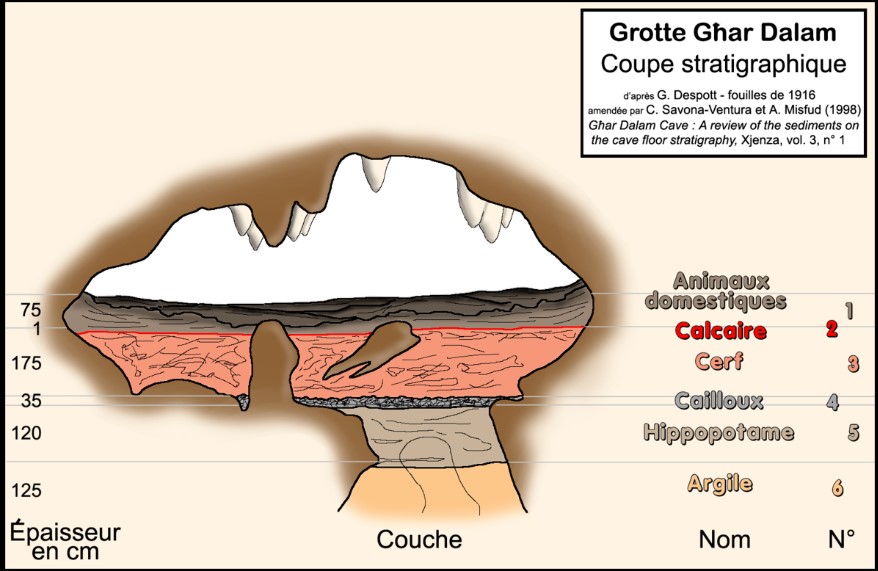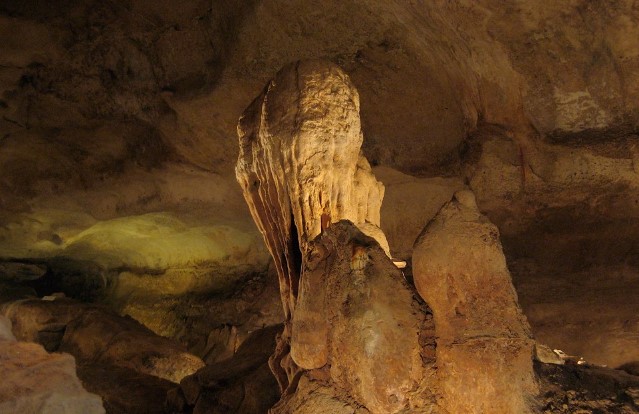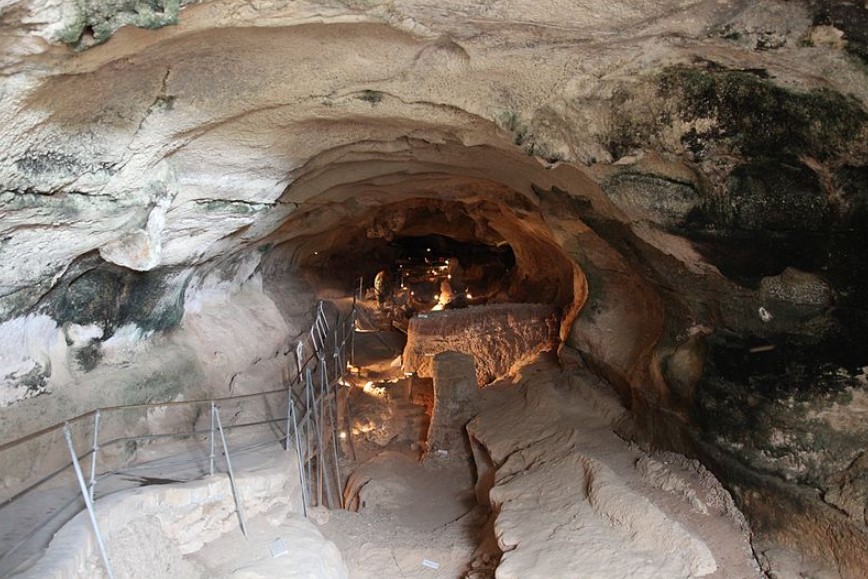Għar Dalam Cave, located in Birżebbuġa, Malta, has a rich history of scientific investigation and cultural significance. Għar Dalam, meaning “Cave of Dalam” (named after a 15th-century family), is a 144-meter-long phreatic tube and cave. This cul-de-sac is significant due to the bone remains of extinct animals found inside, which were stranded at the end of the Last Glacial Maximum. Għar Dalam has given its name to the Għar Dalam phase in Maltese prehistory and is considered one of Malta’s most important national monuments.
Archaeological findings at Għar Dalam include pottery similar to that found in Stentinello, however, without details such as stamp decorations. The bones of a dwarf elephant, hippopotamus, giant swan, deer, and bear found at the site are of different ages. The hippopotamus became extinct around 10,000 years ago, while the deer species went extinct much later, around 4,000 years ago during the Chalcolithic period. Għar Dalam is also where the earliest evidence of human settlement on Malta, dating back 7,400 years ago, was discovered.
The cave was first explored for its Neolithic remains in 1865 by Italian paleontologist Arturo Issel and later in 1892 by John H. Cooke. The findings from these excavations led to the discovery of a new dwarf species of hippopotamus and contributed to our understanding of Maltese prehistory.
In 1925, Għar Dalam was included on the Antiquities List and in 1933 it was opened to the public. A museum was established on site and was gradually upgraded over time, featuring skeletal remains found in the cave and complete skeletons of modern animals as reference specimens. During World War II, the cave served as an air-raid shelter. In 1980, several valuable relics were stolen from the museum.
Today, Għar Dalam Cave and Museum is operated by Heritage Malta and is open to visitors. A project was announced in 2019 to improve physical accessibility between Għar Dalam and other nearby sites. The museum still showcases a wealth of finds from animal bones to human artifacts and provides access to the first 50 meters of the 144-meter-deep cave.
The Għar Dalam Cave is comprised of six distinct layers, each with its own unique characteristics. The first layer is the Domestic Animal Layer, which is about 74 cm thick and contains mainly cultivated animals like cows, horses, and sheep/goats. Human remains, including pottery, flints, tools, and ornaments or amulets can also be found here.
The next layer is a Calcareous Sheet, which is approximately 0.6 cm thick. The Deer Layer, which is about 175 cm thick, is the home to dwarf deer derived from the red deer (Cervus elaphus) and small carnivores such as the brown bear, red fox, and wolf. This layer also contains big swans, giant turtles, and voles.
The Pebble Layer, which is approximately 35 cm thick, is made up of small boulders and pebbles, indicative of a fast-flowing river that once streamed through the cave. The Hippopotamus Layer, which is about 120 cm thick, is mainly comprised of the dwarf hippopotamus species Hippopotamus melitensis, along with the dwarf elephant and the giant dormouse Leithia cartei. Lastly, the Bone-Free Clay Layer, which is about 125 cm thick, contains no bones, only some impressions of plant material.


